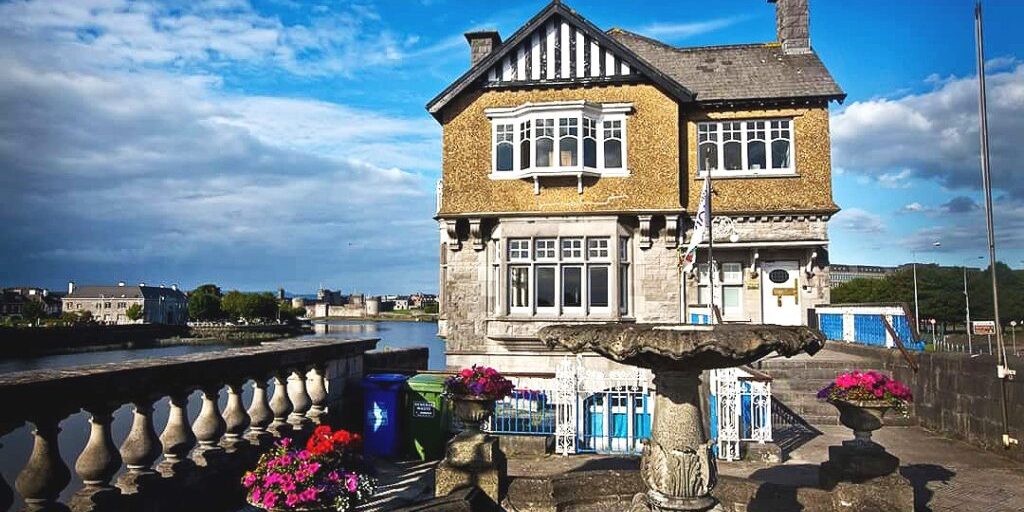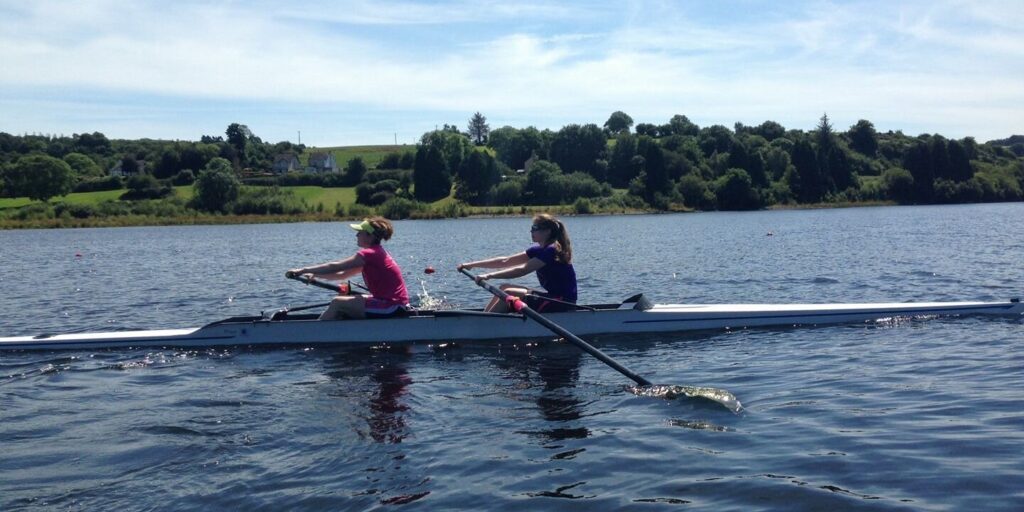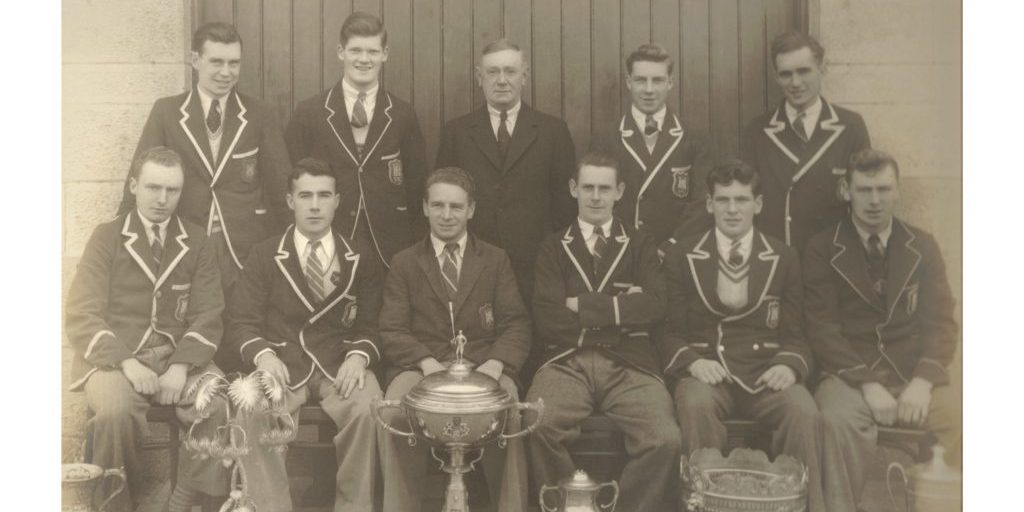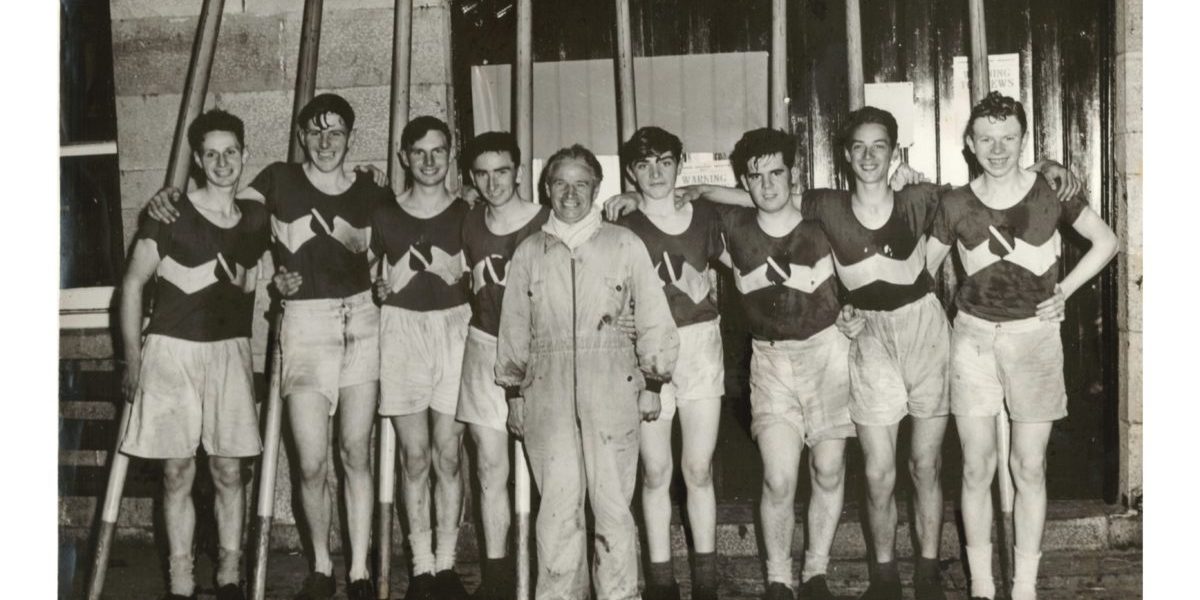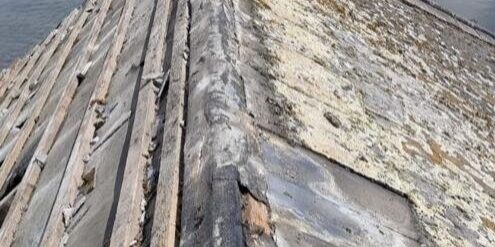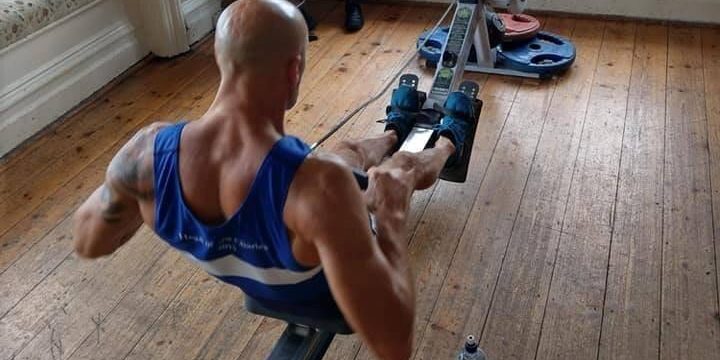"Winning takes a back seat to building character.”
Tony Wallace, former club president
Introduction
The Shannon Rowing Club’s 150th year in existence represents an important milestone in Limerick’s sporting history. Often recognized as one of Ireland’s oldest sporting institutions, Shannon Rowing Club’s history is one that is laden with victories and successes as well as times of uncertainty and loss. Yet the club always recovered and still competes at an astonishingly high level.
In terms of the club as an institution, it seemed to become more than just a sporting organization. It became more than just a club. As former club president Tony Wallace asserts, the club was “all about shaping the individual. Winning took a backseat to building character and shaping personalities.” Yet this mindset of helping develop young people often went hand in hand with winning and success. To examine the history of this tradition, as well as the victories, the crews, the members, the captains, the presidents, one need not stray further than the lynchpin of Limerick; the river.
The Shannon
According to historian P.J Ryan, the commercial and social life of Limerick depended on the river Shannon. The river was always busy, with many steamboats and other sailing craft bringing turf, livestock, and other goods from small ports on the west coast. Also anchored in the river were many cabin cruisers and yachts belonging to city merchant. The river was home to many recreational activities, but the size and scope of the Shannon itself made it a prime location for rowing competitions.
It was during this period, in the second half of the eighteenth century, that there was a dramatic shift from individual sports to a more organized, team-based type of recreation in Britain and Ireland. This coincided with a marked increase in recreational activities among all classes of people from about 1850 onwards.
There was also, according to social historian Keith A.P. Sandiford, a sense that people wanted to be more athletic and physically fit. This could be because many working class men wanted to better those that may have been in a higher class than them or indeed may have been in a better position in their line of work. Competition was at the heart of this increase in popularity of team sports, and one of the main reasons why there was such an emergence of rowing, rugby and even cricket during this period.
During the late 1800s and early 1900s, people had very little free time as most worked sixty hours a week with just Sunday off. Although this was an improvement on the eighty hour week of previous decades, it meant that leisure activities were more commonly pursued by the upper and middle classes.
The sports of rowing and rugby are important to note, as they both began to bridge the divide between the classes. Uniquely, Limerick was the only place in Ireland where rugby was played by all classes, and this had a knock-on effect for rowing. This all-class-inclusion was because the Limerick middle classes, who had introduced the sport, were not large enough to support rugby on their own and had to widen the pool of players. Limerick rugby clubs were so successful that the game became popular with all classes. Limerick had a tradition of strong men who worked at hard physical manual labour. These men were drawn to rugby and were thus drawn to rowing. Limerick’s location on the longest river in Ireland meant that the Shannon played an important role in Limerick life. Rowing was very popular and rugby dovetailed into this.
Rowing and rugby fitted together very well into the social life of Limerick as many men played rugby in the winter and rowed during the summer. In St Mary’s Parish, for example, men played rugby with Shannon and rowed with Athlunkard. By start of the 20th century, there were a number of rowing clubs in Limerick. Limerick Boat Club was set up in 1870. Two others followed: Athlunkard in 1898 and St Michael’s in 1901. The oldest club in Limerick, however, went on to become one of the most successful. The Shannon Rowing Club was to become one of the major forces in rowing in Limerick, and later, even further afield.
The Foundation of a Club
However, it was in 1866 that a group of prominent business people and rowing enthusiasts gathered to set up a rowing club that was based on the river Shannon. These people included a Father J. Purcell, who “gave the club its name, and the colours which it still retains.” Alongside Fr. Purcell was Limerick’s mayor and prominent businessman Sir Peter Tait.
Sir Peter Tait was arguably the most important figure involved in the setting up of Shannon Rowing Club in 1866. Born 8 August 1828 in Lerwick, the capital of the Shetland Islands, Tait was the owner of one of the biggest clothing factories in Great Britain and Ireland. He employed around 1,000 people at the Limerick Clothing Factory. His entrepreneurship brought a lot of different businesses and industries to Limerick, and was seen as the leading figure in Limerick business circles. In 1866, the year he helped set up the Shannon Rowing Club, he became Limerick’s only known non-Irish mayor.
Councillor T.C. Phayer made the following proposal at a Town Council meeting: “In acknowledgement of services rendered by Alderman Tait to this city, by the establishment of his great military clothing factory and flax factory, and drawing attention to the capabilities of our noble river by the starting of his steam vessels to America, we thereby request him to accept the office of Mayor for all the employment he has given the city.” Tait was elected for three consecutive years, from 1865 to 1867. Tait was the key piece of the Shannon Rowing Club’s foundation, and had helped get the club off the ground during the first year of his mayoralty, and was the first mayor to be a member of the Club. This was a tradition adopted by the Rowing Club, as every mayor since then became an honorary member of the club.
However, it should be highlighted that the club was quite particular about recruiting members, as evidenced by the ballot books that were routinely kept up to date by the Shannon Rowing Club committee. At the start of every month, the committee would meet and vote on the election of new members. These members would be voted in by the committee and duly elected as members. Most notably, it appears as though the membership election of Limerick’s first Fenian Mayor John Daly was a peculiar event. In the meeting of the committee on 26 May 1897, Daly only secured just thirteen votes, while twenty-nine people voted against his election. Daly is listed as being “blackballed,” which refers to the system of voting.
A vote for a new member would be represented by a white ball and a vote against would be represented by a black ball. Daly was blackballed because he received 29 votes against. Daly was furious with this decision, as he believed he should have been accepted due to being regarded as a respectable businessman, but the Shannon Rowing Club refused to vote him in because of his prison record and Fenian background. However, some of the nationalist members of the Club, along with other prominent nationalists, presented Daly with his own rowing boat which was handed over to him in a colourful ceremony.
Becoming More Than Just a Sport
Rowing would have emerged as an organized team sport from the school or university system, it was one of the few sports that actually flourished in an amateur setting as well. It would also develop professional forms that the amateur class of sportspeople were eager to distinguish themselves from.[v]People began to row in different competitions in order to better themselves, or indeed to raise themselves above their club colleagues and local rivals. While there were no official regattas until the mid 18th century, the Shannon was often the setting for fishermen who held contests, with the Old Abbey and Plassey Regattas being organized on the river by the Abbey fishermen and other guilds. There was a regatta in Limerick every second year, but those ended in the mid 1970s. There were two regattas held by the club in the 1990s, but there were no official Limerick regattas for a lengthy period of history.
The Shannon Rowing Club has competed at a number of events over the years, but some of the most successful and notable regattas were the Henley Royal Regatta, the Corrib Regatta, the Athlone Regatta, the Trinity Regatta, the Cork City Regatta, and many others, the programs of which are still stored in the records of the club. These events were key to the development of the Shannon Rowing Club, and allowed them to flourish in a more competitive environment. Of course, this competitive environment meant that there had to be a number of changes, not just with how the club operated, but also where the club operated.
Moving Around
Around the late 1800s, as seen by Limerick’s Fire Insurance Plan Maps from 1897, Shannon Rowing Club was located at 48 Thomas Street. They had to move to a new premises that was close to the water. Their part-time boathouse was in Corcanree, while Bournemouth-based architect William Clifford Smith designed a new club house. After many years of planning and construction (Initial funds were raised in 1893), the new Shannon Rowing Club building was opened in 1904. Most of the funding, when considering the one thousand pound fee for Clifford Smith, came from a Derby Sweep Draw that was held regularly in the years prior to the boathouse’s construction.When this new boathouse on Sarsfield Bridge opened, they vacated their old timber boathouse in Corcanree which St. Michael’s Temperance Society members eventually took over.
The hiring of Clifford Smith is important because it was done so in a rather unique fashion. A worldwide competition was launched for architects to submit their designs for the new club house. These designs would be judged by the Royal Architects Institute, before a shortlist of three would be presented to the Shannon Rowing Club. Clifford Smith was chosen, and the clubhouse was finally occupied in January 1906, at a final cost of just over five thousand pounds. After the big move, Clifford Smith wrote a letter to the club’s honorary secretary J.Shannon, acknowledging receipt of. A cheque for 100 ponds and thanking them “for the handsome of way in which they have treated me, both now, and form the time, when I had the good fortune to first come amongst them.” After the Shannon Rowing Club left their old premises, a new rowing club moved in and was officially formed there as St. Michael’s Rowing Club.
As more working class men and women began to row, particularly towards the end of the century, the sport began to evolve, and more competitive regattas began to appear in the annual calendar. The sport, by 1900, was seen as an energizing, positive and healthy activity for all classes of both women as well as men. Jack Gleazer probably epitomized the energetic and positive people that became members of Shannon Rowing Club. For more than thirty years, he served as an officer of the club, was captain eleven times, and was president of the club five times. He was an active oarsman for more than two decades, and was beaten only once in 18 years of pairs. In all, during his time, he won more sculling events than any oarsman in the world. According to his obituary, his only loss occurred earlier in his career when he “hit the bank in the Trinity regatta when he looked up at a pretty girl who spoke to him from the Liffey side.” J.J Hartigan was another figure during the early part of the century that seemed to be an everlasting figure of success and vigour, as he was captain of the Shannon Rowing Club for over a decade.
The Female Rowing Experience
Amanda Schweinbenz, feminist theorist professor, states that during the early years of the sport, it was white upper-to-middle class, wealthy men that dictated who should have permission to participate in rowing clubs around the world. Women were not allowed to row during the early years of the sport, as it was seen as a masculine activity. While women were allowed to participate in Olympic Games in swimming, tennis and figure skating prior even to the First World War, rowing was not deemed to be a woman’s sport. However, despite women not being allowed to officially row, there was an emergence in ‘style rowing’ which was popular around Britain, Ireland and most of mainland Europe, and allowed for women to take part in style events from the late 1860s onwards. Style rowing was based more on the elegance and finesse of the sport for women rather than the speed of the boat or the strength of the oar-pulls. Women participants were also not allowed to wear certain garments while rowing, particularly anything that revealed their ankles.
By the 1960s and 1970s, there were female rowers that represented the Shannon Rowing Club, but they were not actually members. Their non-membership was due to a condition in the club’s rulesthat banned women from joining. This was incredibly ironic, according to former president Tony Wallace, as “they were the only ones at that time that were winning anything!” An article in the Limerick Leader appeared in 1967 which lampooned this rule. A woman named Ms. Kirk Boyd Barrett and her friend Molly were apparently appalled by the state of the Shannon Rowing Club, as the club seemed to scramble to try and get a crew together for the maiden eight. Ms. Boyd Barrett spoke of how she and her friends were seen as “River Girls” who were helped by boatman Johnny McInerney and coached by Jack Gleazer. They soon becameseen as “flappers” as they became older, and “rowing widows” as their spouses would leave them at home to go rowing. She also stated that she and Molly were always disgusted by the fact their “sex debarred us from participating” at events.
The Wars
Limerick had a very strong military tradition. This tradition had been deeply entrenched in the mindsets of many young men, and this was at its most obvious during the years 1914-18, as the First World War raged across Europe. The Shannon Rowing Club was also affected by this, as many of the young rowers had left to fight for the British army. The minute books for the war years show that there were many emergency meetings, and that the receipts for the club were down on previous years, prior to the outbreak of the war. What added to this tense situation was the outbreak of rebellion during 1916. The clubhouse was given over to the military, so that it could be used as a base of operations in Limerick. Explosives and ammunition were to be kept on the premises, it was decided at a meeting of the committee on 1 May 1916. The military occupation of the clubhouse allowed the British to transport material from a very centralized position by both land and river. During the War of Independence, the building was occupied a number of times, by both the British Army and the Regulars during the Civil War. However, even through all of these occupations rowing continued to occur at the club, but this was mainly due to the good relationship between the club and the local barracks, as well as the relative compliance of the club to assist when necessary. The Second World War did not seem to have as much of an impact, as the minutes of the meetings from 1939-1945 do not mention the war. While there are numerous instances of condolences being passed to members on a frequent basis, it is not stated explicitly whether these men fell in battle. However, it is clear that there were a number of soldiers that were a part of Shannon Rowing Club, as the amount of club members dropped from previous years. The Club won it’s first ever Irish Championship in 1945 when it annexed the Junior Eight (now Intermediate Eight) in a victory over Limerick Boat Club at the Marina in Cork. The crew comprised of : P.J. Hartnett, C. McNamara, R. Slattery, O.Browne, P.Leonard, F.McInerney, C.Ryan, T. Harrington, M. Curtin, V.J. Quinn (Cox).
The Expansion of the Club
In 1956, the club held its annual dinner, and it was an event that was noted for the 90th anniversary of the club’s foundation. Past captains and presidents such as John Hall, Arthur McNiece, Michael Hartigan and Ned O’Toole were remembered, as were some of the most famous victories by the Shannon Rowing Club. The CBS schoolboys of 1954 were lauded for their victory in the Maiden Eight Championship of Ireland bringing a second Irish Championship to the Club. They set an all time record for their efforts during that competition in their category. This victory was achieved at Limerick Docks with a crew of : M. Gillen, B. Finan, J. Nash, T. Reidy, N. McNamara, D. Gilligan, J. O’Carroll, B. McNamara, V.J. Quinn (Cox).
Former committee member Brendan Finan was one of these rowers that brought much acclaim and popularity to Limerick and the Shannon Rowing Club. According to Finan, the eight schoolboys had only taken up rowing in the previous year, and in the school competition, they easily beat off the other competitors in two heats, breezing to victory. They came home to Limerick to a hero’s welcome, and there was a scramble amongst the local rowing clubs to sign them as members. Finan stated that they felt they owed one to the Shannon Rowing Club due to the club’s kindness to the team prior to the victory. The Shannon Rowing Club, however, wanted to take that crew’s best members and merge it with their own of the same age, which the schoolboys rejected. “They’d either get all of us or none of us!” stated Mr. Finan. The club allowed the schoolboys to take up oars, and entered them into the Maiden Championship a few weeks later. They repeated their feat and coasted to victory in that Championship. The teenagers had made history, and set a national record for their efforts.
A Dip in Popularity
By the early 1960s, there appeared to be a decline in the popularity of rowing in Limerick, due to the lack of victories for clubs around the city. There were plans for a rowing league, with a points-based system that ranked the teams on their races against each other. The sport, according to one opinion piece in the Limerick Leader, was going to go in decline if Limerick did not produce the best of the best once again. One of the big issues, according to Jack Gleazer- a member of Shannon Rowing club who was beaten just once in 18 years of rowing, was that the youth had lost interest in the sport. According to Gleazer, “the future of rowing in Limerick, looking at the way things are at the moment, does not look too healthy. That old enthusiasm so evident in oarsmen of former years is now completely missing. The youth of our city has lost all interest... Until our present or aspiring oarsmen begin to realize that (physical fitness is important), rowing in Limerick will be finished.”
The sport of rowing in Limerick faded during this period for a number of reasons, but the main reasons were that the young people of Limerick had not been as interested in rowing as they had been for the previous hundred years, and also that the former rowers did not try their hand at coaching or mentoring new crews. An editorial in the Limerick Leader even commented that “out of the big number of men who have rowed in the city, so few can be found to put back a little that they themselves have gotten out of the sport.” There was then a break in rowing, as the club did not race at any of the major regattas from 1961. The Shannon Rowing club was essentially on hiatus for two years, until 1963, as Gleazer, captain of Shannon Rowing Club that year for the eleventh time since 1911, brought the club back to prominence. While he was the man tasked with bringing success and popularity to the club, he was also ably assisted by younger members of the club, and his vice captain was Mr. Tommy Reidy. The members of the club had to deal with a number of issues in order to return the club to healthy competition and membership, with a broken slipway being the chief concern.
The Shannon Rowing Club then started to branch out into new arenas of public interaction, as the full-sized billiards tables began to be utilized by the club. Competitions were held, and the committee agreed to use the venue of the clubhouse as a centre for exhibition matches. In 1965, the Shannon Rowing Club hosted an exhibition event with world-famous snooker and billiards player Jackie Rea. On that night, he broke his own Irish record, with a 126 break. Rea even declared that he had never heard such support from the crowd in the clubhouse in his 33 years of playing snooker. This idea started to grow, and the club became renowned for these matches, and eventually a local annual event was held every Christmas where local Limerick people paid in to play in a snooker competition.
The Revival
During the lead up to the centenary year of the Shannon Rowing Club, The Limerick Chronicle argued that the best way the club “could honour the memory of its great oarsmen who won fame for Limerick over the past hundred years would be to open its doors again to the youth of the city and for the promotion of rowing. After all, it was for that ideal that the members first banded together in 1866.”
At the Shannon Rowing Club’s centenary dinner in 1968 -there had been some confusion over the actual foundation date of the club- it was clear that there had been something of a mini-revival within the halls of the club. Alderman George Edward (Ted) Russell, who was mayor at the time, spoke at the event, stating that now that the sport began to regain popularity, he was confident that the club “would once again bring honour and glory to Limerick.” Long-serving member Mr. Stephen Foley, channelling the spirit of John F Kennedy, added that “to those who would be critical of the club, they should ask not what the club should do for them but what they should do for the club.” Indeed, there were plans set in place where the club would try and build specific gym facilities with hot and cold showers, weights and other equipment. There was also a push for a new state of the art slipway that would allow Shannon Rowing Club to compete at the top level.
The centenary was to mark the start of a reversal in fortunes for the club, as there was an increase in the number of people rowing. The surge in popularity was very much linked to the furore surrounding the club’s ‘centenary’ of 1968. The exact date may have been off, but the increase was welcome, and it was noted at the club’s annual dinner that there were more people rowing for the club at this point than in any of the previous twenty years. This was also probably down to the diverse range of people that were in the club itself. Committee member Brendan Finan remembered the club’s reputation for being elitist, and some locals referred to members of the club as “snobs.” Yet both Mr. Finan and former president Tony Wallace found this rather baffling, as there were members of the club from all over Limerick, from Southill and Moyross to Castletroy and Garryowen. Finan recalled that he was proud of the club’s diversity at that time, standing up to any of the “snob” accusations with fervour.
In November 1969, controversy hit the sport in Limerick, as a deputation representing all of the boat clubs in the city considered confronting the Minister for Industry and Commerce, Fianna Fáil’s George Colley, over the new 15 per cent tax on the importation of racing craft. Mayor at that time, Stephen Coughlan, stated that the tax was “penal” and said that he was “prepared to lead a deputation to the minister.” Rowing was an expensive enough sport, with top-of-the range boats costing substantial amounts of money, as well as general up-keep and maintenance of other older boats. Most of these had a certain lifespan, so replacing them was a costly yet necessary measure. Having a 15 percent increase in that cost was not ideal for any rowing club that was not in the best financial position. Despite the mayor’s outcry, the tax was still implemented. However, going into 1970, it was hoped that Shannon Rowing Club would find big success on the water during the following decade.
The Dawn of a New Era
Indeed, November 1970 saw the installation of a public slipway at O’Callaghan Strand that had been in the offing since 1964. The slipway was to see a boost in numbers in terms of boats on the Shannon at low tide, as well as a renewed popularity for rowing on the waterways.
The election of Noel Clancy as captain in March 1972 saw much changes at the club, along with the vice presidents John Harrold and Felix O’Neill, who tried to develop a newly introduced sailing section so that the newcomers would eventually graduate to rowing. Mr. Clancy stated that “The club owes a great debt to rowing; there is a strong movement behind the sport here, and we are hoping that it will come into its rightful place.”ii Cumiskey, Harrold and Clancy were three of the main individuals that saw a resurgence within the club.
According to former Shannon Rowing Club president, Tony Wallace, there was a spike in popularity during the 1970s, and it was at the end of that decade that Mr. Wallace himself joined the club. Wallace made his own boat, due to the rising costs of buying a ready-made craft. This was an issue that would have faced many of the rowers at that time, but it did not deter people from taking part. A mason by trade- like his father- Wallace made the boat from fibreglass, which was a step up from the older wooden-layered clinker boat that was often found sailing up and down the Shannon.
The 1970s and 1980s saw the Shannon Rowing Club develop into a more modernized club, as many of the presidents and their committees at that time realized the need to invest in order to not only survive as a club, but also to compete at a higher level. Both Mr. Finan and Mr. Wallace were in agreement that it was Ian Cumiskey snr., president during this period, that initially started the rejuvenation. Cumiskey saw that in order to compete, investment in the highest quality boats would be the key to increasing the club’s stature as well as membership figures. Money was spent on a number of boats, and soon, the Shannon Rowing Club was back in popularity. On 25 March 1980, there was a discussion held on the funding for equipment. Ian Cumiskey suggested that a percentage of the annual subscription could be put aside for the purchase of equipment. Felix O’Neill then added that part of the annual subscription could be put into a separate account designated solely for a new boat house. At the next meeting, 1 April, it was decided that money from the subscriptions would be used on the boats, and to repair the damaged ones. On 1 October 1981, the club bought a new boat which was reported to be “a delightful and fast boat.” By 4 May 1982, another new boat was purchased, marking the second purchase in just over 6 months.
Within a decade, by 1989, the club had seen a number of victories in a number of categories, but one of the highlights was the Junior Eights Championship of Ireland victory in 1989. According to a report in the Limerick Leader, there was a large homecoming for the victorious crew, their families and their members. It should be highlighted that the mayor of Limerick at that time, Gus Driscoll, remarked that “some twenty five years ago, Shannon Rowing Club was not going well, and had gone out of rowing altogether. Many members, including politicians and ex-mayors, had no interest in the rowing. I am glad to see that that has all changed, and that once again, Shannon is at the forefront of Irish Rowing.”
The Evolution of a Modern Rowing Club
The mid-late 1980s, 1990s and 2000s were the most successful decades of the club’s history. The Women’s Novice Coxed Four was won in 1988 with a crew of Joan McGowan, Bridget McGowan, Michelle McElligott, Ann McCarthy and coxed by D. Daly. This win was in addition to the Men’s Junior Eight which was won by the Shannon Rowing Club as well, the crew was made up of B.Collins, B. McInerney, A. Kelly, P. Collins, M. Hayes, M. Quinn, N. O’Callaghan, P. O’Toole, A. Murnane (cox) and coached by Ian Cumiskey. The club president, Frank Thompson, later remarked after the crew’s retention of that title in 1989 that “they were all heroes that day, and I never saw such excitement among the Shannon members. The victorious 1989 Crew was largely the same as the previous year with E.McCarthy, C. Malone and Eddie Crean being added. 1989 also saw the winning our second Ladies Irish Championship when Maxine Murphy won the Elite Coxless Pair in a composite with Workmen’s Rowing Club. ” The following year, in 1990, Shannon Rowing Club’s Brian Collins won the men’s junior championship, even after a recurring knee injury that seemingly hampered his preparation. Despite trailing for the majority of the race, he won the title by half a length.iii It was not just the on-water achievements of the club that made news during that year, as it was announced that the clubhouse would be restored at the cost of £140,000. On 27 April 1992, the club secured its first victory in Dublin with a win at the Neptune Regatta’s Elite Fours competition. The club, in July 1992, went on to make history at Blessington, as they became the first Limerick club to win the intermediate coxed fours Championship of Ireland with a crew of Fergal O’Callaghan, Brian Collins, JJ Gleeson, Mark Quinn and Gareth Byrne (Cox). Coaches Ian Cumiskey and Eoin O’ Toole. In 1993, Collins and Fergal O’Callaghan made up the Coxless Pair that won the Irish Senior Championship at Iniscarra, continuing their unbeaten streak from the start of the season. Again coached by Ian Cumiskey. The two also saw success in 1996 as they won three Irish Senior Championship in the Coxless Pair, Coxed and Coxless Fours.
There was a string of victories during the 2000s, starting in 2003, as the national Intermediate Mens Pair was won by Michael O’Callaghan and Stephen Ryan. The 2006 Mens Senior Quad was won by the crew of F. O’Callaghan, B. Collins, K. McDonald, and M. O’Callaghan, coached once again by Ian Cumiskey. The following year, in 2007, the Irish Senior Eights was won by Shannon Rowing Club’s F. O Callaghan, B. Collins, M. O’Callaghan, and K. McDonald in composite with St. Michael’s Rowing Club.
History was made in December 2008, as Carole O’Toole accepted the nomination to become first female President of Shannon Rowing Club. She had already set a precedent when she became the club’s first female honorary member, but became one of the first women nationwide to hold a presidential position at a Rowing Club.
That year, both the Senior Coxed and Coxless Fours was won by a Shannon/Galway composite crew that the club’s own Kenny McDonald was part of. The 2010 Mens Novice Four was won by N. Taylor, D. Stundon, S. O’Sullivan, and B. O’Carroll, with C.McGowan as cox. The 2013 Mens Junior 1X was won by Conor Carmody. In 2015 the Club’s twentieth Irish Championship was won when Helen Ryan and Michelle Lonergan won the Women’s Intermediate Coxless Pair.
In 2002 the future of rowing in the Club was under serious threat when a weir was constructed adjacent to our property on Sarsfield Bridge. The increase in flow meant that our slipway was far too dangerous to launch from most of the time. The next six years were the most challenging for the rowing members whereby they would load the trailer at weekends and carry the boats to O’Brien’s Bridge to train. It was difficult to retain both oars people and coaches owing to this hardship let alone attract new members.
From 2008, the club was rowing in Annacotty on lands initially rented, then acquired from what was Shannon Development. This brought a new competitive, professional edge to the Shannon Rowing Club, as it allowed them to train and row in an area that was non-tidal and sheltered, providing the ideal location for rowers to practise and at set times. This stretch of water was seen by many as being “ideal” for the club, and was lauded in the Limerick Post “for bringing a greater safety aspect to rowing. The construction of a new boathouse there was completed in 2018.”
A Second Family
The search for the records of the Shannon Rowing Club came to some success in 1972, as the president, vice president and others located most of the minute books and other records of the club in a locked drawer that had not been opened “in living memory.”v Today, after a century and a half in existence, they are conserved and archived with the Limerick Archives. Here, future historians, scholars and enthusiastic rowers can find out more about Limerick’s first rowing club.
Yet the Shannon Rowing Club should be recognized as more than Limerick’s first rowing club. As one looks through the records, and the stories that are scattered throughout the minutes, a sense of familiarity begins to appear. As many of the past captains and past presidents state in their farewell addresses after reaching the end of their term, there is much more to the Shannon Rowing Club than the rowing itself. Former president of the club, Noel Clancy, stated that the club was “a club for the faithful,” where those that believed in the sport, and believed in the crewmates around them, got everything that they wanted from the club.
Tony Wallace described the club as “an external family.” Indeed, there is certainly a sense of kinship and friendship that pervades the club’s records. Even today, the same familial sense and commitment to the sport can be found within the walls of the welcoming clubhouse, upon the shimmering waters of the Shannon, and inside the bustling boathouse. These 150 years has seen many successes and victories as well as some defeats and losses, but the club- as its longevity proves- is much more than just the sum of its parts. The club became a second family for many of its members. A home from home. It can almost be guaranteed that in another century and a half, that that spirit and love will still live on in the hearts of its members.

